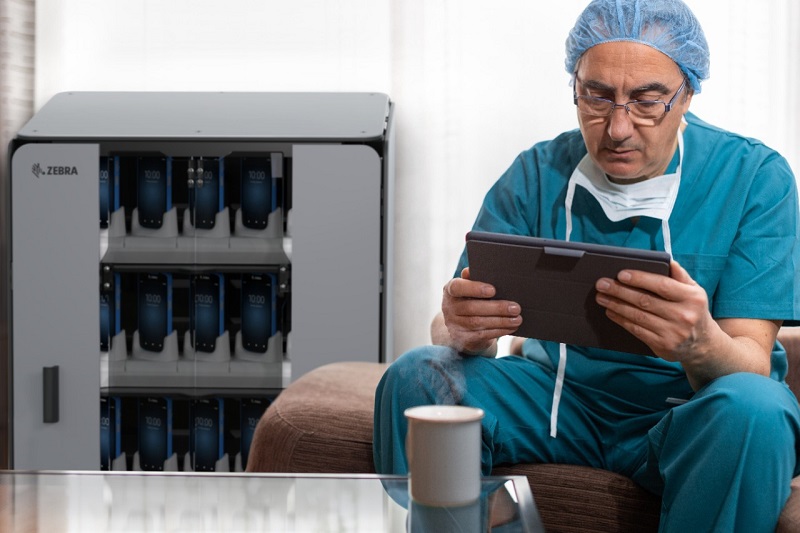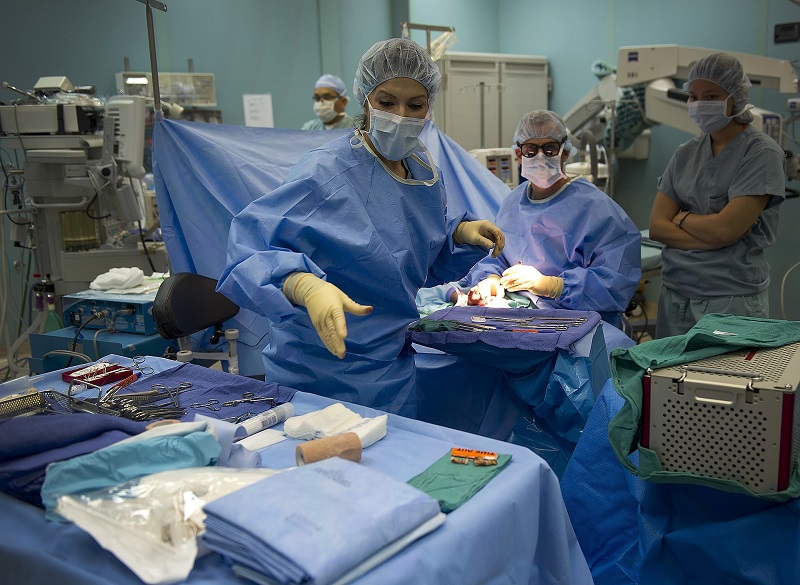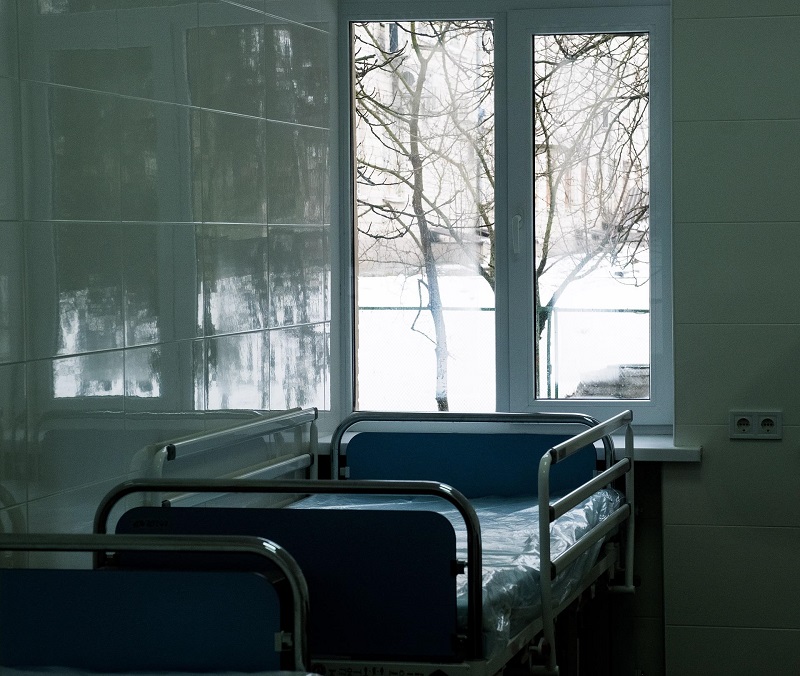Since October 2013 all NHS hospitals in England have been required to use standard GS1 electronic barcodes for patient wristbands.
Prior to this mandate, a number of different styles and brands of wristband were used, and most were handwritten and checked by eye, with the information displayed varying from ward to ward and hospital to hospital.
In addition, up to three wristbands were often used per patient, further adding to the confusion and the potential for error.
The purpose of the move to an electronic system was to support the accurate, timely, and safer identification of patients, as well as linking patients to the various stages of treatment.
The wristbands utilise radio frequency identification (RFID) technology – and it was quickly realised that this could have an even-bigger impact on the NHS.
Scanning for safety
In 2016 the Department of Health awarded funding to six hospital trusts in England – Scan4Safety demonstrator sites – to investigate how consistent use of point-of-care scanning might improve safety and efficiency.
At these organisations, barcodes produced to GS1 standards were introduced on patient wristbands and the associated equipment used for their care, including implantable medical devices, in various locations around the hospital, and sometimes on staff badges.
No one saw COVID coming, but one benefit has been the increasing acceptance of technology among healthcare workers
Before, and during, all procedures, these barcodes were scanned, creating a real-time data trail of which products were used on which patients, where they were, and which members of staff were involved.
Wayne Miller, director of healthcare practice at Zebra Technologies, said: “The technology aimed to create commonality in reporting, giving like-for-like measurements across NHS organisations.
“If for example, Dr Smith and Dr Jones were both carrying out three or four knee operations every day, the NHS wanted to be able to measure the outcomes.
“If Dr Smith always had a better outcome, what equipment was he using? What drugs did he prescribe? And what was the aftercare?
“It was about driving better patient outcomes while at the same time reducing the postcode lottery and overall long-term costs.”

Zebra Technologies has worked with a number of NHS to install its RFID solutions
Making savings
The impact of this approach was far reaching, with the six pathfinder sites reporting a collective 140,000 hours of clinical time released, £5m worth of recurrent inventory savings, and £9m worth of non-recurrent inventory reductions.
In addition, Leeds Teaching Hospitals NHS Trust found the average time taken for product recalls fell from 8.33 days to less than 35 minutes, saving in excess of £84,000 a year.
And the Royal Cornwall Hospitals NHS Trust reduced prevented-error rates by 76%, including elimination of all errors caused by wrong patient, wrong drug, wrong dose, and wrong form.
But uptake of RFID is still in its infancy when it comes to tracking physical assets, which can number more than 35,000 in a single acute hospital.
The technology aimed to create commonality in reporting, giving like-for-like measurements across NHS organisations
“RFID is trusted, but the NHS is holding its breath when it comes to using it to its full potential,” said Miller.
“We worked with one trust in the North East, with 1,200 beds across two hospitals. They wanted visibility of all equipment and patient and staff interaction, and they have seen considerable return on investment and less time spent searching for equipment.”
It is estimated that nurses spend 40 hours a month searching for the equipment they need, taking them away from their main job – supporting patients.
The main reason for this is that hospitals do not know what equipment they have, or where it is within the maze of buildings which make up the average hospital estate.
And this is where RFID technology, and real-time location systems (RTLS), are playing an increasingly-vital role.
The right place at the right time
Miller said: “If a nurse spends 30 minutes per shift looking for equipment, then in a single hospital with 15,000 nurses across three shifts, this quickly adds up – around 3,750 hours every single day and 1.3 million hours a year just looking for kit!
“Using RFID can help these nurses and give them time back to care for patients.
“It also helps engineers, finance, IT departments, and estates managers.
“For example, a lot of hospitals lease equipment and when these assets come to the end of the lease agreement, they need to be serviced or there are penalties.
“RFID can alert engineers to equipment that is due for service and tell them exactly where it is.
“It can also give data on the use of each piece of equipment because, if you are paying £300 a day to lease a specialist bed, you want the maximum uptime from that asset.”
RFID is trusted, but the NHS is holding its breath when it comes to using it to its full potential
To install systems, labels are placed onto individual pieces of equipment. These link to antenna placed in physical locations, most commonly entrances and exits to departments and storerooms.
And the technology can be achieved with almost any item, including:
- Medicines and pharmaceuticals: RFID can reduce the amount of time spent counting medicines and ensures accurate data so the correct types and quantities of drugs are on hand. Tags inside or on each bottle or box can be read with handheld readers during an inventory, or can be constantly tracked through fixed readers and shelf antennas. Tags are also used as an authentication or anti-counterfeiting resource
- Patient and staff tracking: RFID can track people as they move through the hospital. Active RFID can identify problems in workflow, with RTLS badges showing how long a patient or member of staff has been in a particular area and reporting that data to managers. It can also be used to track newborn babies, with tags put around infants’ legs and alarms on exits sounding if a child ventures close. Alarms also alert staff if they are removed from a child
- Surgical tools: Surgical tools need to always be on hand, clean, disinfected, and ready to use. Each year, studies show that surgical instruments in hospitals are found to carry bacteria from previous use, either due to not being sterilised or not being sterilised properly. Not only could tracking these items with RFID tags ensure that each tool was sterilised prior to use, but a properly-implemented system could shed light on sterilisation methods for individual tools. Where single-use items are concerned RFID inlays can provide a cost-effective inventory solution, recording which staff members use them and reducing waste or theft
- Large equipment: Hospital beds and miscellaneous portable testing machines are high-value items in hospitals that can occasionally go missing or get misplaced. Keeping track of these items is critical in hospitals because the replacement cost is high. In addition, some of these assets are not readily available and would take time to replace. Using an RFID system is an ideal way to keep tracking of these assets within the building. Hospitals typically use an active RFID Real-Time Location System (RTLS) to know where they are at all times. Some implement the system to read only certain areas or rooms, while others set up their systems to cover entire hallways or floors
- Security: Security is another facet of people tracking that hospitals use to limit access to certain rooms or areas. With this type of system, the staff members must wave or tap their RFID-enabled badges in front of door readers in order to gain access. Not only does this prevent unauthorised access to restricted areas, but it provides patients, medicines, and medical equipment with a level of security that deters theft or damage
- Laundry tracking: Towels, blankets, and sheets are just few examples of linens and textiles that reside in almost every hospital room, and each of these items must be washed and disinfected for use before the next patient is admitted. An efficient way to keep track of these items, as well as ensure they are sterile, is by using a system with RFID laundry tags. The application is similar to that used for surgical tools as it creates an inventory and ensures cleanliness

RFID can be used to create a data trail of which pieces of equipment and products were used on which patients, where they were, and which members of staff were involved
Miller said: “No one saw COVID coming, but one benefit has been the increasing acceptance of technology among healthcare workers.
“With restrictions on the number of patients in any one room, RFID can tell us when these limits have been reached and can stop patients from being sent to these areas.
“It can also tell us when equipment and spaces need cleaning or disinfecting.
Realising the benefits
“When we work with hospitals, we first ask them what their main problems are and what will give them the greatest benefit. Then we use RFID technology to address these challenges.”
As well as asset tracking, RFID can also help to predict demand.
We are confident adoption of RFID will continue to spread and, as a result, we will see it applied to more varied and interesting use cases
Miller explains: “A lot of what is happening in the outside world corresponds to what will come through the door of a hospital A&E unit.
“By attaching the RFID data to medical records, you can predict future pressures and ensure there are enough staff on duty at peak times.
“For example, if it is a warm bank holiday, you might see more alcohol-related conditions, falls, or burns. Or, on a Saturday afternoon, you may see more sports-related injuries.
“As RFID tracks patients through the department, and their medical records show the type of injury or illness, hospitals are able to become much more efficient.”
Offering advice to trusts looking to adopt the technology, a spokesman for GS1 UK said: “Organisations need to have clinical engagement and a Scan4Safety group, ensuring that all affected departments are included in driving the adoption of GS1 standards.
“They also need to ensure that all technology requirements are fully scoped with formal agreements signed off at senior level, ideally The executive board, that clearly set out what the project will deliver.
“And any technology they procure needs to be fully compliant with GS1 standards and meet the necessary local, legal, and third-party regulatory requirements.”
Person, product, place
To support solutions providers, GS1 UK has launched a partner programme that guides them through the process of getting their technology products approved as compliant.
The spokesman said: “We recommend that trusts conduct a thorough audit of all assets. This will allow them to determine the number of GS1 Identification Keys required and identify priority areas/assets for initial implementation.
“Overall, the key to successful adoption is the implementation of GS1’s core enablers – person, product, place.
“These allow assets to be cross referenced with the relevant person, product, and location information so trusts know exactly where assets are, who is responsible for managing them, and who is using them at a given time.
“Trusts also need to have a robust governance process in place to ensure that each identification key is unique. This should then be carefully documented in their standard operating procedures.
“And, following implementation, trusts should review metrics against their benchmarked success factors from commencement of the project.”

Placing RFID tags on large pieces of equipment can help with locating them as they move around the hospital and help to ensure they are maintained and cleaned effectively
Blazing a trail
Cambridge University Hospitals NHS Foundation Trust is one of the early adopters of RFID equipment tracking technology.
Working with GS1 UK it fitted tags to mobile medical devices and specially-designed trolleys fitted with powerful RFID readers are now used to automatically record the date, time, and location of all tagged devices within range.
The team also has small mobile hand-held readers for when they perform equipment searches or to audit wards.
As a result, average times for supplying a device to a ward is down to around 12 minutes.
The key to successful adoption is the implementation of GS1’s core enablers – person, product, place
Audit times have also been significantly reduced – from 90 minutes to just eight minutes.
And device utilisation has increased so money is not wasted on needlessly hiring devices or purchasing additional equipment.
In addition, the system has highlighted potential patient safety issues. For example, A&E had specific settings on syringe drivers, which caused problems when these devices were used by staff who were unfamiliar with the settings. The RFID tagging highlighted this issue, resulting in additional staff training and the introduction of generic settings.
The GS1 spokesman said: “We are confident adoption of RFID will continue to spread and, as a result, we will see it applied to more varied and interesting use cases.
“In hospitals that are still tracking and tracing assets manually, there are considerable benefits to be gained through the implementation of RFID through GS1 standards, particularly in ensuring interoperability across disparate systems and organisations.”
